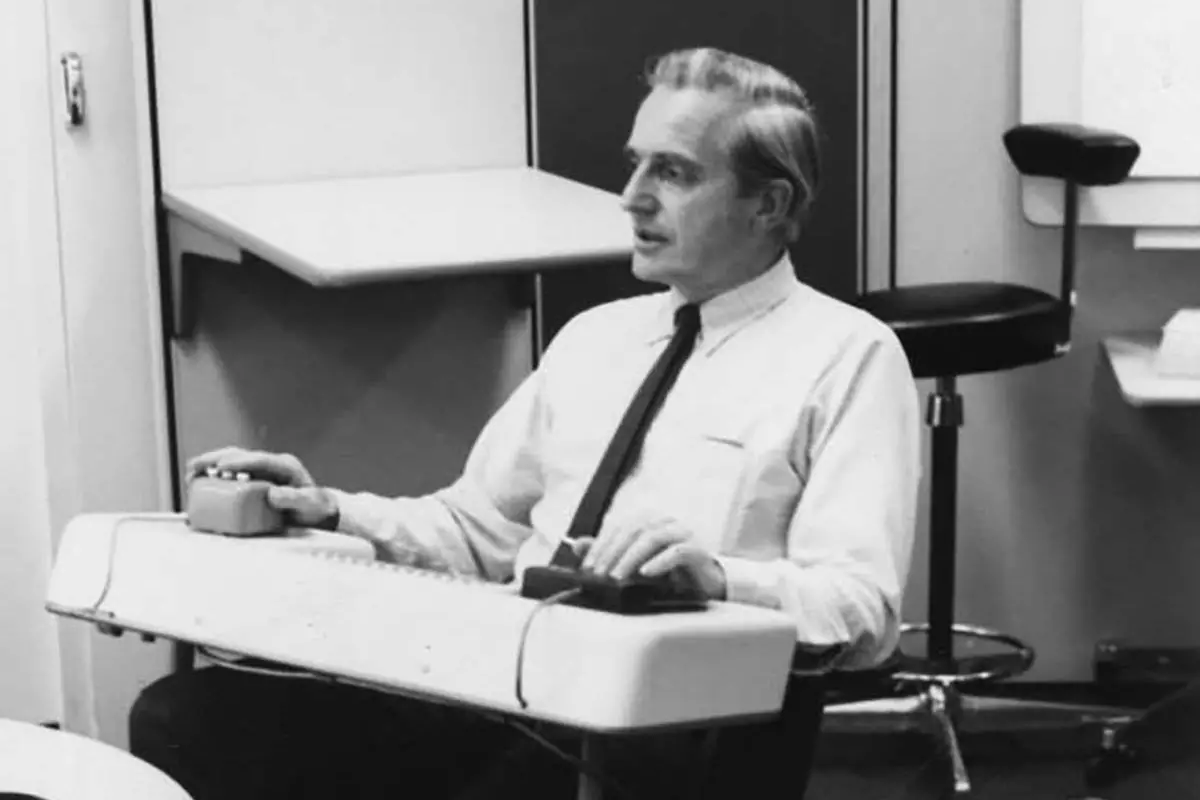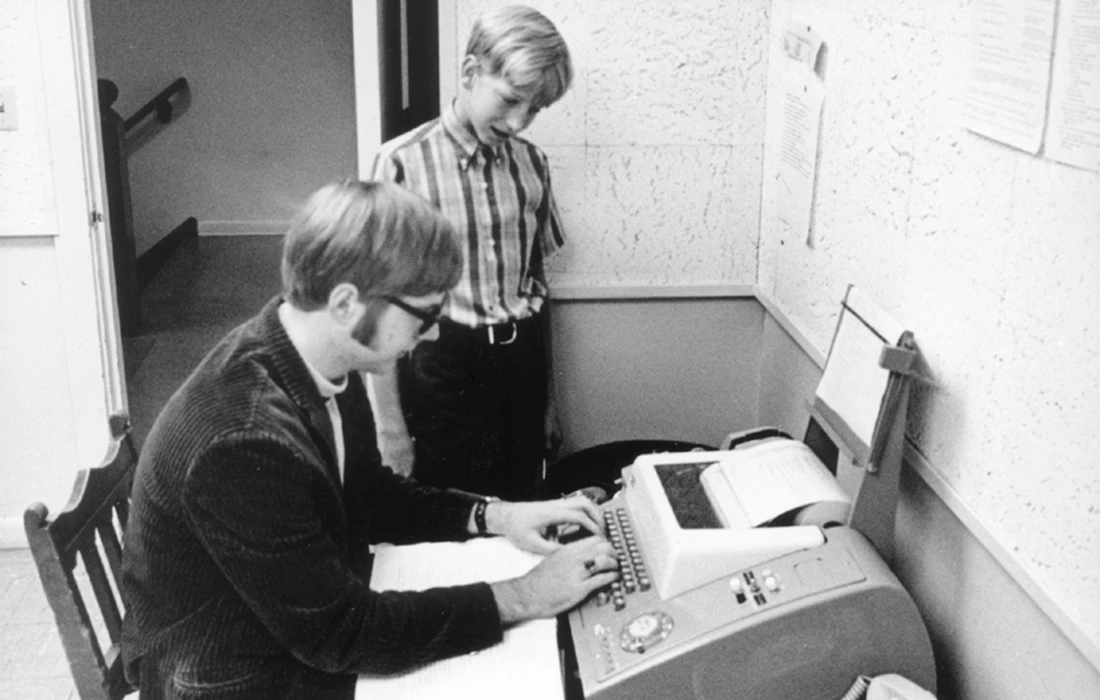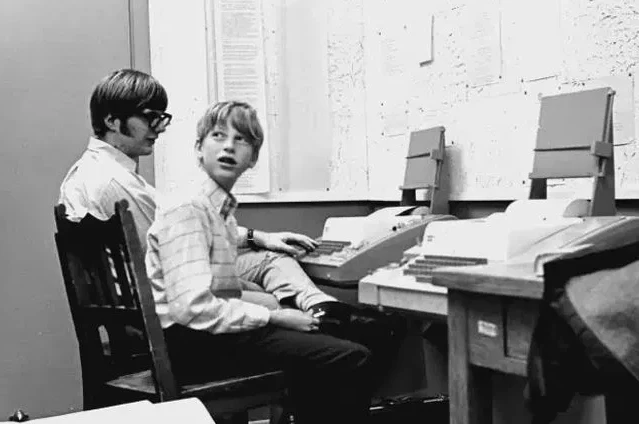The computer mouse was one of those ideas that changed the world. It was such an intuitive and easy way to instruct a computer, that widespread global adoption followed and the impact of the humble computer mouse on society has been gargantuan. We're just about to see how much the world recognises it.
First proposed in 1966, only a handful of the first prototype batch are still extant and just the sixth example ever to go to auction will sell on September 10 ... from the finest collection of "Technology Firsts" in private hands - assembled by someone with both micro and macro perspective on the digital renaissance and who made billions of dollars from its usage – Microsoft co-founder Paul G Allen.
The ability to point-and-click, coupled with the "What You See Is What You Get" (WYSIWYG) Computer Human Interface (CHI) was first commercialised in 1983 on the Apple Lisa, but gained massive public recognition as an integral part of the Macintosh "desktop" in 1984.
The graphical user interface became the key competitive difference of the Apple Macintosh - it offered a computer anyone could use.
Microsoft followed, licensing the invention from Xerox in 1985 to drive a graphical user interface (GUI) it called 'Windows,' and … BOOM … the world adopted computers, because they started looking a whole lot more user-friendly than the text prompts and blinking green cursors of yesteryear.
The WYSIWYG interface was the simple metaphor that enabled anyone to intuitively use a computer - the notional desktop, folder, file, garbage icons turned the CHI from a pedantic headache of compressed letters and numbers into simple objects any office worker could relate to.
One of the most technicolor moments in my life was watching my toddler son appear in the doorway of my home office on the day our first Apple Mac arrived. I was exploring the MacPaint package (bundled with MacWrite for an extra $200), and after watching for a few minutes, he tottered over to the desk, climbed into my lap, gently removed the mouse from my hand, ran it around the real desktop while watching the screen for a few moments to get his brain calibrated … and began to draw ... minutes later he was painting.
As someone who had begun programming computers more than a decade prior, with a paperclip and punchcards, (and endless queues to get your code run), I appreciated the contrast in our experiences. He became a digital native that day, but I was aware that something much bigger was happening ... that similar experiences would be unfolding across the world, and humanity was just about to embrace the computer.
For the the first time, no typing, language, writing or programming skills were needed on the human side of the computer human interface divide ... and no prior experience. The computer did the heavy lifting of morphing into something we could more easily comprehend ... with the aid of a mouse.
It was a quantum leap forward in usability. The mouse enabled humanity to embrace and harness the power of a machine that worked tirelessly, never made a mistake, used infinitesimal electricity, and got cheaper, more powerful and more useful every year.
The computer also got smaller quite quickly during the sixties and seventies, from house-sized to room-sized to washing machine-sized to desktop, and the journey has since continued onwards to laptop to smartphone to smartwatch ... and beyond.
More than half of all human beings now carry a supercomputer in their pocket and the humble mouse was one of the critical factors in humanity's initial embrace of the computer just a few decades ago.
Its global adoption was almost instantaneous by conventional historical timelines, and the WYSIWYG interface spawned many offspring, but it all started with the mouse/WYSIWYG combination in 1968.


The “mouse” (and the CHI behind it) is of monumental significance to history and it is one of the only world-changing ideas where we actually do have pictures of the inventor, the first prototype (carved from wood, no less), the first test batch of 20+ mice and Engelbart's first “pitch” on the idea, which has gone down in history as the most epic and revolutionary tech demo ever made.

The legendary 1968 'Mother of All Demos' in its entirety is now available online. Watching it in 2024, it's hard to believe just how many game-changing concepts were first shown here to the public. Windows, graphics, video chat, hypertext links, word processing, collaborative editing, revision control... It wasn't just the mouse, it was an innovation tour de force, and a stunningly prescient glimpse at many ways in which we continue to use computers more than 50 years later.
The breathless claims that "Douglass Engelbart invented the future" that day are not entirely baseless.
The mouse in the video is the same as the one that is going to auction on 10 September 2024 as part of the collection of Paul G. Allen Collection - one of only a handful known to still exist of the first batch of prototypes.
Steve Jobs was the first to recognise the massive potential of the interface, licensing it for $40,000 for incorporation into Apple's WYSIWYG user interface and the rest is history, with derivatives of the mouse pointing/cursor concept having since sold in the billions.

Six of the original prototype batch, as used by Engelbart the day he "invented the future" have been to auction previously.
The first Engelbart mouse went to auction in December 2020, just over 52 years after that famous demonstration, and seven years after Engelbart passed away. Technology specialists RRAuction sent it to auction with an estimated price of $800.
New Atlas has regularly revisited the historical gravitas of the mouse over the last quarter century, and leading up to that first auction of one of the original Engelbart mouses, our David Szondy described the estimated $800 price as a “huge bargain.”
It sold for $34,479, making news around the world as it was certainly the most anyone had ever paid for a mouse.
A high price at auction tends to bring similar items out of attics and basements, and the 2020 auction price of $35,000 precipitated a second Engelbart mouse going to auction in August 2021, where it fetched $49,751.
Two more Engelbart mouses went to auction at the same RRAuction in March 2022, indicating that the value of one of the originals of one history's most profound inventions had been indexed by public opinion at roughly $50,000 - one sold for $45,935 the other for $54,904.
The fifth and last Engelbart mouse to go to auction was last year (2023), and our write up of the March 2023 auction, which saw the price rise to $178,936, noted “the value is finally beginning to reflect the historical status of the pioneering device.”

With the Paul G. Allen Estate now selling his Engelbart mouse, the historical relevance and value to society of the Engelbart mouse comes into clear focus. As co-founder of Microsoft, Allen was more aware than most of the significance of the mouse. The world's two largest companies were arguably both built on the WYSIWYG mouse interface: Microsoft and Apple. Both are now valued at more than three trillion dollars.
Paul G. Allen is the co-founder of Microsoft. Allen was a childhood friend of Bill Gates, and although the pair always looked years apart, the actual age difference was just two years. Their companionship blossomed from a common love of wrangling the rudimentary integrated circuitry of the day and things grew from there … and grew and grew ... and the Windows operating system meant that non-Apple users could also have a WYSIWYG interface.
Paul Allen died one of the world's wealthiest people, one of the history's greatest collectors and one of history's technological giants - the story of his importance to history was elucidated in this article on Allen's Steve Jobs Apple-1 going to auction from the same collection on the same day - 10 September 2024.
This mouse (and keyset) should be in a museum to human ingenuity, but it can be yours if you have somewhere north of $10,000 to invest, at least according to the Christie’s estimate.
We’d be surprised if anyone lands this lot with a bid of less than 100 times that amount, and we’ll be watching when the auction streams live and free on September 10 just to see what happens when the big boys come to play.
History is almost certain to be made ... multiple times ... because historical significance is setting in.
Source: The Engelbart Mouse & Coding Keyset, and Christie's Auction of Paul G. Allen Technology Firsts










